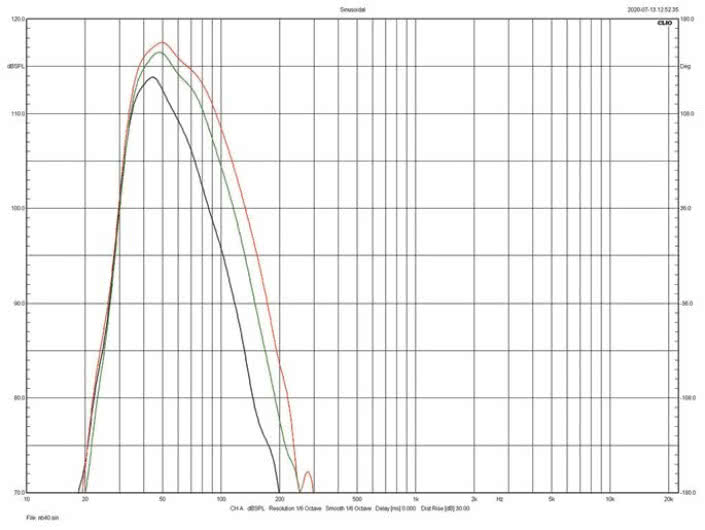Hello Stephen, to answer your questions:
1. Do you need bass freqs between 20Hz - 40Hz that your system currently does not produce? My answer: I can't answer that for you, because it depends on what music you listen to. If you want to find out, run your music through a real time analyser (like the built-in RTA in JRiver). This analyses the amplitude of each frequency in real time. If your typical music selection has a lot of signal between 20-40Hz, then you should want to reproduce it. HOWEVER, this comes at the cost of a new sub, or even multiple subs. And also, your brain is good at reconstructing the missing bass due to the
"missing fundamental effect". As you might guess, the answer to whether you "need" that bass varies from person to person. You have to balance your OCD and your music against your budget and domestic situation. Only you can do that.
2. Wanting to optimize for a large area AND getting rid of boomy bass with a single subwoofer is a problem which DSP may not be able to solve. The usual approach is to use multiple subwoofers to even out the bass response in the room. If you have a single sub, correcting the frequency response in one position will introduce problems elsewhere in the room. The larger an area you wish to correct, the less effective DSP will be (although some DSP is still better than nothing). If you want to correct over a large area, I would suggest drawing a map of your room marking out the areas where you wish to correct. Then when you take the measurement, you need to perform a sweep at every listening position you wish to correct for, and then average out the curves, then load that into your DSP software and correct that.
Bear in mind there are some simple measures you can take to alleviate boomy bass, e.g. opening doors and windows. Obviously the downsides are that you annoy your neighbours and cold weather, insects, and traffic noise get in, but you can decide whether that trade-off is worth it for you.
3. If I am reading your measurements correctly, it appears that your Dali Oberon's are able to reproduce frequencies down to 40Hz! And your subwoofer is the same, it only goes down to 40Hz. Are you sure you took a measurement of the speaker only with no sub? I tried Googling for the FR of the Dali Oberon 1's and I am not sure if the image posted by @Zollall upthread was the FR of the Oberon 1's since his image is unlabelled. His image shows that a roll-off below 100Hz, which is the kind of performance I would expect from a small speaker like yours.
Obviously, if you have three speakers (i.e. 2 speakers + a sub) capable of going down to 40Hz, that makes point 2 in this post invalid. You would be able to use all 3 speakers to even out the bass in the room. Are you SURE your speakers don't roll off at 100Hz? This is important because it will change the conversation.
4. Re: choosing where to correct to. Yes, theoretically your Schroder freq is 128Hz and this is where you should correct to because above this frequency, bass no longer exhibits minimum phase behaviour in the so-called "transition zone". However, if you look at your transition zone (between Fs and 4Fs, i.e. between 128Hz to 512Hz in your case) you will see the peaks and dips gradually becoming finer and spaced more closely together, corresponding to gradual loss of minimum phase behaviour. I wouldn't be so strict about the calculated 128Hz Schroder frequency, because this calculation assumes the speed of sound is 343m/s, and the speed of sound varies with temperature, humidity, elevation, and so on. I also don't know your T30, I guessed at it after seeing your T60 is 500ms. Regardless, the Schroder frequency is not a number you need to religiously adhere to, it is a rough guideline. If you decide on "bass only" correction, you can go up to 150Hz - 200Hz with no problem.


